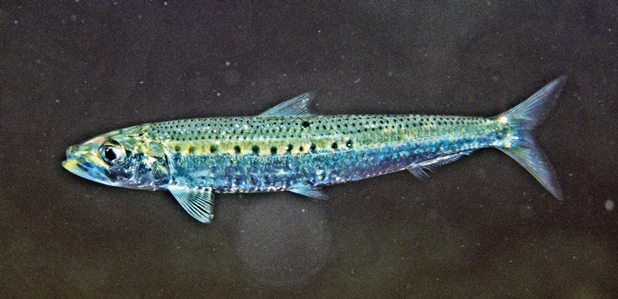General Description
Body long, slender; pelvic fins arising below centre of dorsal fin; last two anal-fin rays visibly longer than preceding rays. Upper surface greenish-blue with a row of darks spots, silvery below. To 25 cm.
Biology
Pilchards congregate in large schools and feed by sieving plankton from the water column. They are very important food fishes for many large marine predatory species and are also taken commercially for use as bait. They migrate along the coast from west to east, forming large breeding schools in surface waters from spring to autumn, otherwise they are found in deeper water.
Habitat
Surface waters when breeding, other times in deeper water, in depths of 0-100 m.
Open water
Distribution guide
New Zealand and southern Australia.
Species Group
Fishes › Sardines, pilchards and allies
Depth
Shore (0-1 m)
Shallow (1-30 m)
Deep ( > 30 m)
Water Column
Max Size
25 cm
Commercial Species
Yes
Global Dispersal
Recorded in Australia
Conservation Status
- DSE Advisory List : Not listed
- EPBC Act 1999 : Not listed
- IUCN Red List : Not listed





